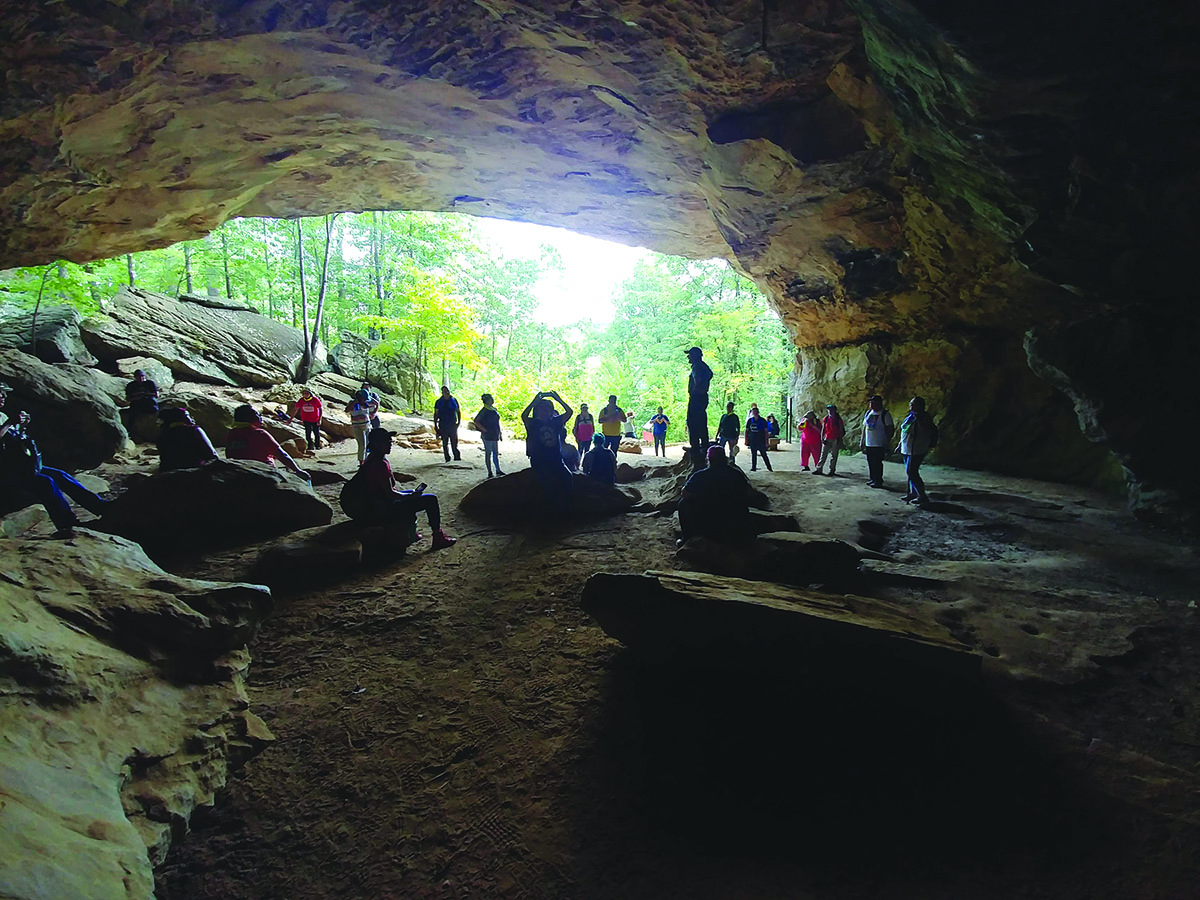by Mary Beth Trubitt and Rachel Tebbetts (abridged from an article published in Field Notes No. 421)

Dr. George Sabo III (Figure 1) retired as Director of the Arkansas Archeological Survey and Professor in the University of Arkansas’s Department of Anthropology at the end of June 2021. Here is a look back on some of his accomplishments and contributions to Arkansas archeology as we wish him a happy retirement.
Dr. Sabo began work as station archeologist at the Arkansas Archeological Survey’s University of Arkansas research station in Fayetteville (ARAS-UAF) in 1979. During college and graduate school, George excavated at numerous sites in northern Michigan and was Assistant to the State Archeologist of Michigan for four years. Working separately under Allen P. McCartney (University of Arkansas) and his dissertation advisor Moreau S. Maxwell (Michigan State University), George conducted archeological and ethnographic research in the Northwest Territories (now Nunavut) in Canada from 1974 to 1979, studying the effects of climate change on Baffin Island Thule and Inuit culture between the twelfth and twentieth centuries. He earned his PhD in anthropology from Michigan State University in 1981 with a dissertation that was later published as Long Term Adaptations among Arctic Hunter-gatherers. His interest in the intersection of archeology, ethnohistory, and ethnography stems from this fieldwork, and he continued collaborating with Native people about their histories here in Arkansas.
As the ARAS-UAF station archeologist, George immersed himself in the archeology of the Ozarks, beginning with excavations at Huntsville Mound (3MA22) and Goforth-Saindon (3BE245) with Marvin Kay and University of Arkansas field schools (Figure 2), and later with excavations at Dirst (3MR80) (Figure 3) and Van Winkle's Mill (3BE413). George edited Contributions to Ozark Prehistory, published in the Survey’s Research Series (Sabo 1986), and contributed to several cultural resource overviews of the Ozark Mountains region in northwest Arkansas.

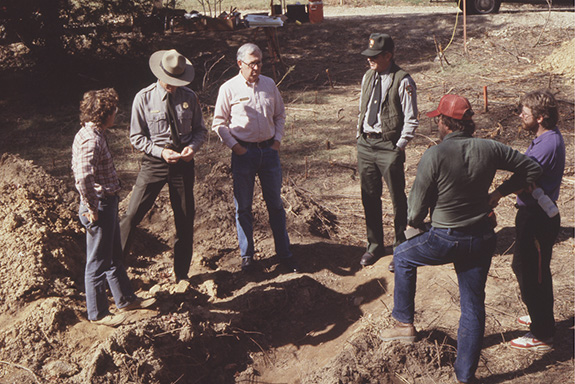
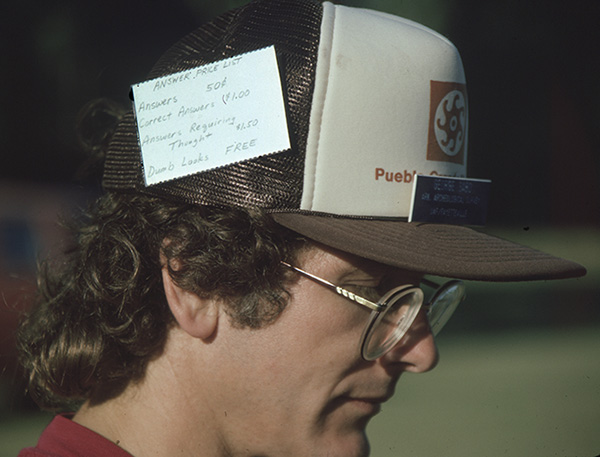
At the University of Arkansas, George taught in the Department of Anthropology, with courses including Field and Lab Techniques in Archeology, Historical Archeology, Ethnographic Approaches to the Past, Introduction to Cultural Anthropology, Technology and Material Culture, Anthropology of Ritual, Indians of Arkansas and the South, and Society and Environment. He mentored numerous graduate students, serving on and chairing thesis and dissertation committees in the Environmental Dynamics and Anthropology programs. Advisees who have earned PhDs include Mary Brennan, Alicia Valentino, Jami Lockhart, Leslie Walker, John Samuelsen, Michelle Rathgaber, and Rebecca Wiewel. In addition to academic teaching, George worked with volunteers in the station lab, taught seminars and led excavations at Society Training Programs (Figure 4), most recently the 2017 Training Program excavations on the Mulberry River in Franklin County (at sites 3FR46 and 3FR58).
George pursued his research interests in ethnohistory by focusing on interactions between Native people – specifically the Caddo and the Quapaw – and the French and Spanish who visited early Arkansas. Residencies at the Newberry Library in Chicago in 1986 and 1987, sponsored by the National Endowment for the Humanities, provided material for his Paths of Our Children: Historic Indians of Arkansas book and numerous publications on Caddo and Quapaw history and culture (Sabo 2000). George began to work more closely with the present-day Caddo community in Binger, Oklahoma, initially observing and talking with people, but later learning Caddo songs, drumming and singing with the Caddo Culture Club, and chairing the Caddo Heritage Museum board (Figure 5). George learned, for example, that the songs of the Caddo Turkey Dance related specifically to historical events that took place in the decades prior to the 1803 Louisiana Purchase (Sabo 2003). Contemporary Caddo people perform the Turkey Dance to reenact history and continue cultural traditions.

With funding from the National Endowment for the Humanities “Teaching with Technology” program, George and his colleagues produced a multimedia educational CD, First Encounters: Native Americans and Europeans in the Mississippi Valley, with modules in English, French, and Spanish. Content from the CD was later incorporated into the Survey’s “Indians of Arkansas” website. He contributed to major Arkansas history texts, educational flyers, and curricula. George’s abilities to bring new technologies into archeology can be seen from his use of archeomagnetic dating, his additions to the Survey’s AMASDA site file database, and recent collaborative projects involving virtual reality, 3D scanning, and micro CT scanning.
George has intertwined themes of art, ritual, and cosmology in several major research projects. With funding from the Arkansas Humanities Council and the National Endowment for the Humanities, he launched an investigation of Mississippi period rock art sites in the cultural landscape of the Arkansas River valley with Jerry Hilliard and colleagues (Figure 6). The team documented rock art motifs and analyzed rock art iconography, leading to an exhibit at the Arkansas Tech University Museum, the development of the “Rock Art in Arkansas” website, and publications ranging from popular to academic (Sabo and Sabo 2005). Between 2009 and 2011, George co-directed the Carden Bottoms project with Jami Lockhart and Andrea Hunter. This new Arkansas River valley research, supported by a National Endowment for the Humanities grant, brought together people from the Arkansas Archeological Survey, the University of Arkansas’s Department of Anthropology, and the Osage, Quapaw, and Caddo nations to explore art, ritual, social interaction, and culture change. Building on the rock art research, the team documented pottery vessels in museum collections decorated with similar motifs, and conducted archeogeophysical surveying and excavations at the Carden Bottoms site (3YE25, Figure 7), now interpreted as a multi-ethnic early 1600s coalescent community (Sabo et al. 2020). This was a successful partnership between archeologists and tribal members.
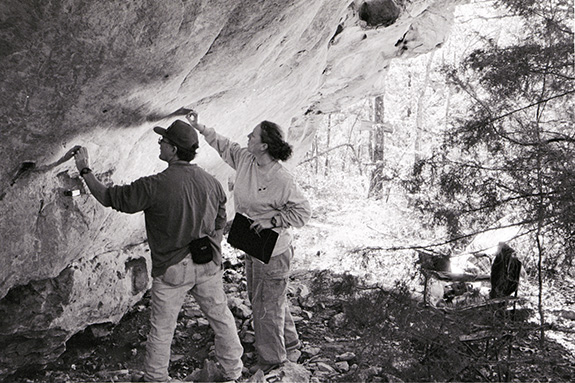

Recently, George has collaborated on new research at Spiro (34LF40), a mound center in the Arkansas River valley in eastern Oklahoma made famous by looting in the 1930s. With colleagues from the Arkansas Archeological Survey and the Oklahoma Archeological Survey, the Spiro Landscape Archeological Project incorporates new archeogeophysical surveying technologies and targeted excavations to investigate non-mound areas of the site. The team has identified evidence of buildings that may have temporarily housed visitors to events such as the world renewal ceremony that created the massive assemblage in what is now known as the Spirit Lodge in Spiro’s Craig Mound. George is active in the working group interpreting this phenomenon as part of the Mississippian Iconography Workshops organized by Kent Reilly III.
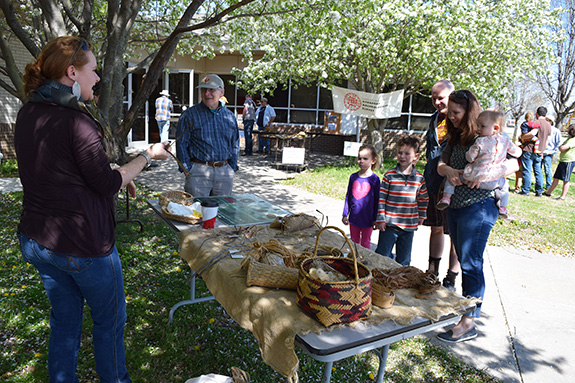
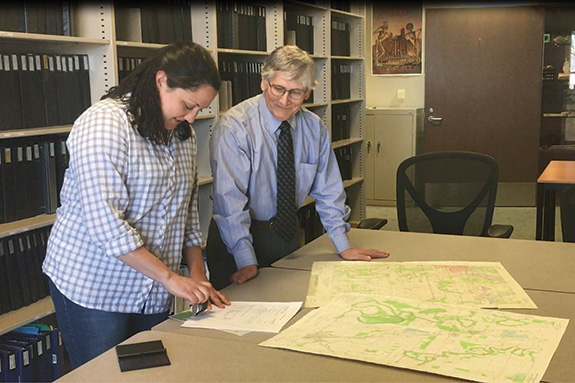
George became Director of the Arkansas Archeological Survey in 2013. In this capacity, he has drawn upon his experience with archeological colleagues, with officials in local, state, and federal agencies, and with members of descendant communities and the interested public (Figure 8). He has tapped the Survey’s history (authoring many of the articles celebrating the Survey’s 50th anniversary, while looking to our future. As director, George has emphasized the Survey’s three-part mission: to study archeological sites in Arkansas; to preserve and manage archeological information and collections (Figure 9); and to communicate what we learn to the people of Arkansas. George has managed and maintained personnel and state funding levels, and has been instrumental in acquiring new funds, including Arkansas Natural and Cultural Resources Council grants and federal Cooperative Ecosystem Studies Units agreements. He has directed efforts to archive records and inventory collections at the ten research stations across the state. Because of his expertise and story-telling abilities, he is in demand as an invited speaker (Figure 10) and has written several popular series books (most recently, Sabo 2021).
The last year was a difficult and critical one for us all. George led the Survey through the transition to the Workday cloud-based human resource and financial management software system AND has guided us through the COVID pandemic of 2020–2021. We are still here and we are still effectively working towards our mission, thanks to George’s strong guidance and leadership.
We wish George and his wife Deb well in their retirements!
